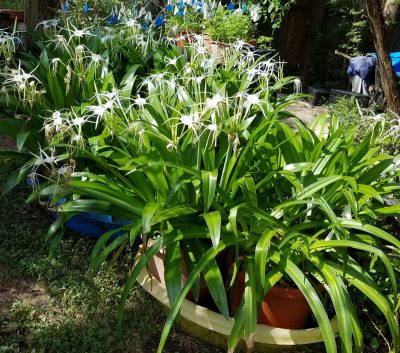What’s wrong with my magnolia tree?
Thanks to Elizabeth Chinnault for sending this question about her two-year-old ‘Jane’ magnolia tree.She writes that the tree bloomed in early spring, and then she noticed the leaves starting to brown and look dry in mid-summer.
She’s been spraying weekly with a fungicide, but the tree seems to be doing worse. Elizabeth also notes that the tree has been getting extra water during the hottest, driest times.
Magnolias are commonly found in eastern regions of the US, and although they can be gorgeous and healthy outside of their normal growing environment, it is much more challenging to be successful with them when they are out of their element.
I wasn’t too familiar with this cultivar, ‘Jane,’ and when I did a little research on it, I was reminded just how challenging it is to sort out basic horticultural information on some plants. Most web sites that I looked at said to plant in “full sun to part shade” which they then went on to describe as “at least 6 hours of full sun.”
Also, soil preferences for ‘Jane’ Magnolia were said to be “acidic, loamy, moist, rich, and well-drained.”
Having the knowledge and experience that I have with plants, I was able to deduce from that information that this plant was going to struggle in Central Texas. And that it would be hard for it to be successful here, since none of our conditions are to its liking. That’s not to say that it can’t be done, just that the stars would have to align perfectly for this tree not to struggle here.
Also, I’m not sure who diagnosed disease issues on the tree, but even if they were correct, spraying anything on the leaves of any plant when the temperatures are above 80 degrees and the air is dry is extremely stressful on plants. What I think would be best at the moment would be to keep watering the plant as necessary in the coming months, but ignore any other issues. It will drop its leaves soon for the winter, and when it blooms and then leafs back out in spring, watch for signs of stress.








